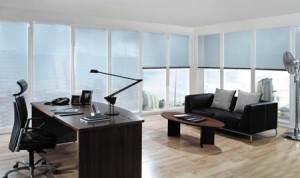 What is Smart Glass?
What is Smart Glass?
Also known as intelligent glass, smart or switchable glass is used to make what are known as smart windows, and means glazing which alters light transmission properties when heat, light or voltage are applied.
Because the amount of light is controlled, heat transmission is as well. This means the glass becomes translucent, so that some light wavelengths are blocked, especially ultraviolet rays.
Benefits include cheaper heating and air-conditioning as well as lighting, and this type of glazing may mean blinds or curtains don’t need to be installed, while, at the same time, fabric is less prone to fading.
Where it’s Used
Smart glass has been found in several high-profile applications, from the Guinness Storehouse in Dublin – where there are privacy windows and interactive displays – to the HQ in London of Nisan Micra, where a glass box was created with 150 switchable glass panels to firm an impressive outside display.
The Washington Monument also has smart glass lifts allowing those travelling in them to see the commemorative stones which are inside the monument, while Bloomberg TV uses this kind of glazing in its London and New York studios.
However, one of the most common applications for smart glass is in corporate settings, in internal partitions, where people can switch glass doors and screens for clear to private as required. Another popular application is as projection screens.
But this product has also been used in healthcare settings, in the interests of patient privacy and because it’s important to have surfaces which can be cleaned easily.
Equally, it can also sometimes be found on different modes of transport – such as the Boeing 787 Dreamliner, where smart windows replace conventional window covers which are pulled down. And the ICE3 family of high-speed trains, from Germany, uses intelligent glass panels to divide the driver’s cabin and the passenger areas.
In the Media
Switchable glass also makes a number of appearances across popular media, including:
· In the 1982 film Blade Runner, where it is seen in a shade used to darken a room so Harrison Ford’s Rick Deckard can test whether the character Rachael is a kind of robot known as a “replicant”.
· The 1995 movie Philadelphia has added poignancy when a switch is throw to make windows translucent so no-one can see Tom Hanks’ lawyer lead character being sacked.
· In season 3 of 24, Jack Bauer uses smart windows to hide the view as he injects drugs.
· In the 2002 movie The Sum of all Fears, Ben Affleck is shown into a Pentagon room where the windows change as the door closes.
· A door frosts over and become opaque in an episode of CSI: Miami, when a young woman working undercover to expose underage drinking is murdered.
· Finally, smart glass is part of the latest Bond film, Skyfall, when it reveals villain Raoul Silva to M following his capture.
Learn more about smart glazing and how it could help you online.
Juliet England is a blogger and copywriter who writes extensively across a wide range of industries, including for websites such as Dream Glass Group.
